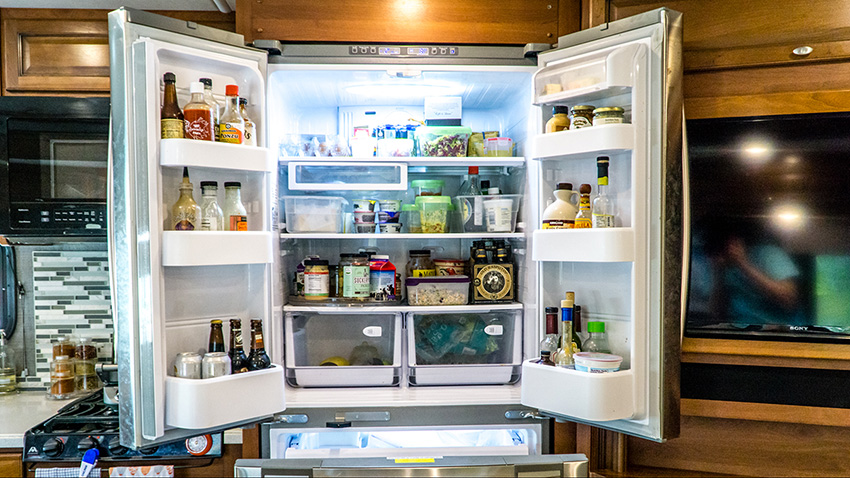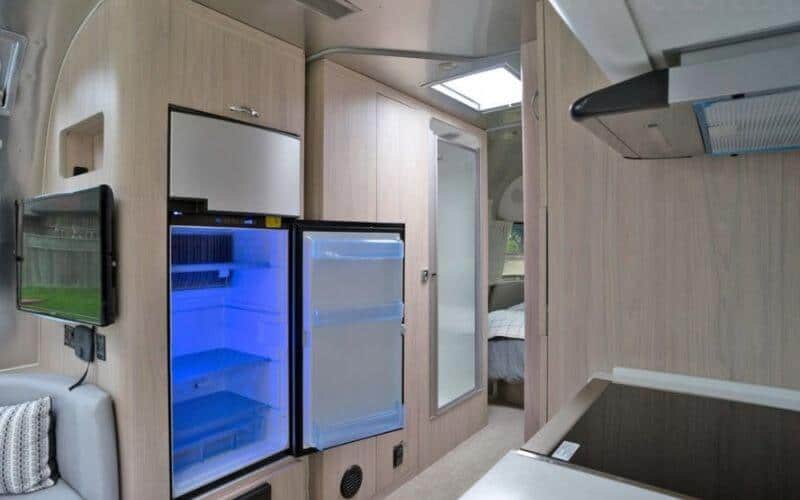Having a fridge in your RV is a wonderful luxury, but it’s not the same reliable unit that you’re used to having in your home. Keep reading to find out how these units are different and what steps you can take to troubleshoot them if they don’t get cold.
 Source: gonewiththewynns.com
Source: gonewiththewynns.com
Help! My Rv Fridge is Not Getting Cold!
Imagine driving on the wide-open road in your RV when suddenly you realize that your fridge full of precious food and beverages isn’t getting cold! This situation can strike fear into even the most experienced RV traveler, but luckily there are a few things you can do to troubleshoot this problem without having to abandon your trip or find alternative cold storage for your food.
RV refrigerators are different from other refrigeration units, and having your unit fail to cool down isn’t an uncommon problem to have, at least occasionally. Sometimes, the unit’s problem is a faulty part, but it may also be due to lack of frequent use or a lack of fuel.
Regardless of how often you travel in your RV, understanding your refrigerator’s parts and how they contribute to the unit cooling will allow you to find the problem and make repairs quickly.
Are You Parked at a Level?
The first thing to check is that your RV gets parked in a level spot. A level RV is essential for an RV specific fridge because they use cooling units that rely on gas and ammonia vapor for fuel. This vapor gets created when heat boils a mixture of water and ammonia in your fridge, and the resulting gas or vapor moves along the system of coils on the back of the unit.
This vapor eventually condenses down into a liquid that moves into an evaporator unit, where a bypass unit lowers the pressure so that heat can disperse.
Dispersing the heat at this step creates the cooling effect in your RV fridge, and if the fridge unit is not level, all of these components cannot work in tandem as intended, and the liquid ammonia may not vaporize and circulate as it should.
The easy fix here is to make sure you don’t park on a slope or incline of any kind without then leveling your RV. When you pull into your campsite, you should check your RV to ensure that it’s level using the onboard bubble level or a handheld version.
- On the rear bumper
- On the floor on the inside of the RV
- On a countertop inside the RV
You may need to use some blocks to get your RV to be perfectly level, and placing these under your right or left tires can help. It’s possible to buy specific blocks for your RV, but many travelers rely on wooden blocks. Plastic is the traditional material of choice for RV blocks, and you can also purchase RV leveling jacks.
 Source: rvingknowhow.com
Source: rvingknowhow.com
Inactivity & Sediment Buildup
If you haven’t used your fridge in a while, debris can sometimes block the burner unit that lights the propane fuel. If there’s debris on this unit, the propane won’t ignite, and the fridge won’t turn on, but luckily this has an easy solution.
Use a vacuum or a gentle dust rag to remove the debris if you can and attempt to light the propane again.
If you get no flame at all, there might still be debris in the way, and if the flame is weak, it could indicate that there’s still debris or rust trapped inside of the burner.
A shop vac or portable vacuum works best for this task but remember to practice caution near the gas and electrical components of the fridge.
Another thing you can try is pushing a thin wire into the burner opening to remove any clogs or debris. You’ll also want to thoroughly clean the metal shield that wraps around the burner before you replace it. Lastly, if your RV fridge runs on gas or electricity, you can check the thermocouple by using a multimeter.
Routine Maintenance for Your RV’s Fridge
If possible, try to keep a manual for your fridge on hand, as this is a valuable resource that can speed up the troubleshooting process. This manual should also have a list of suggested maintenance that you can perform every so often to ensure your fridge stays in good working order.
Avoid storing spoiled food in your fridge or leaving it turned off and unused for prolonged periods. Before you set out on your next journey, it’s a good idea to vacuum around the fridge unit and confirm that it cools down.
When you store your RV, you should keep it level to avoid dispersing sediment in the ammonia inside the unit and confirm that you have enough fuel when you turn the fridge on again.
Bottom Line – Can’t Seem to Fix?
Most RV fridge problems you can fix yourself, but it’s essential to practice caution when working with electrical and gas components. If you work your way through the necessary troubleshooting steps and still feel lost, it’s time to call in a professional.




